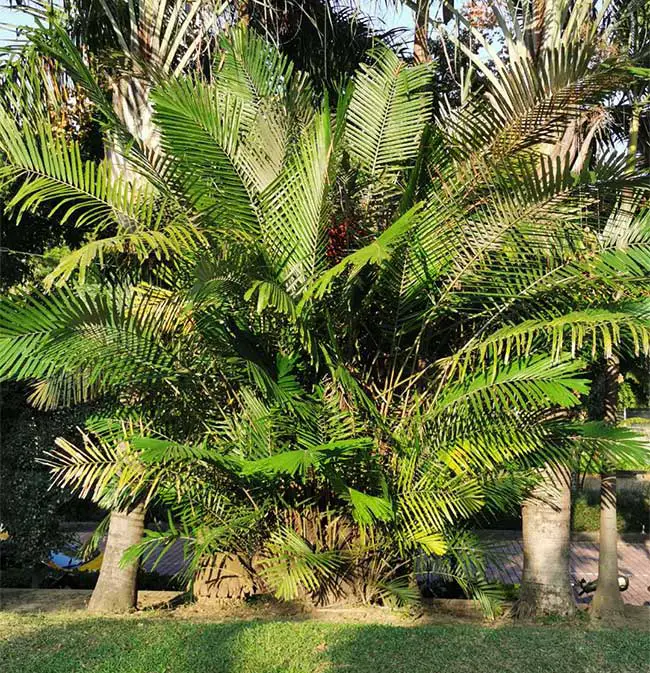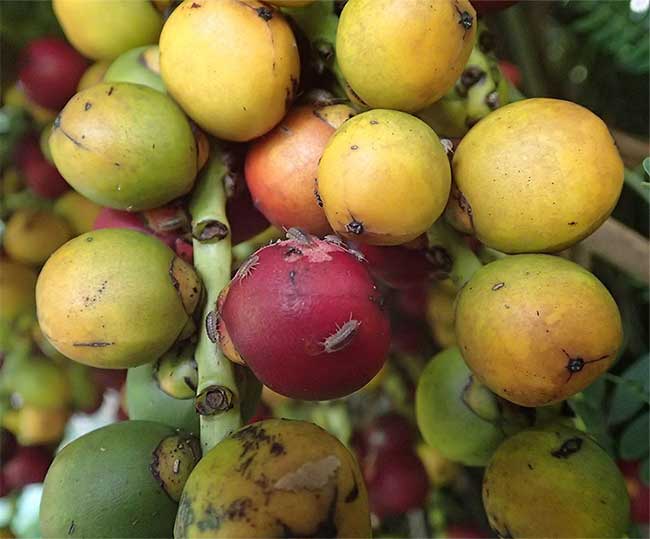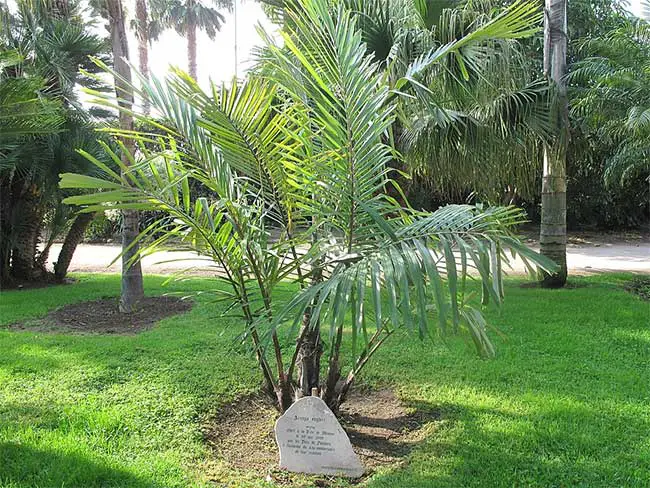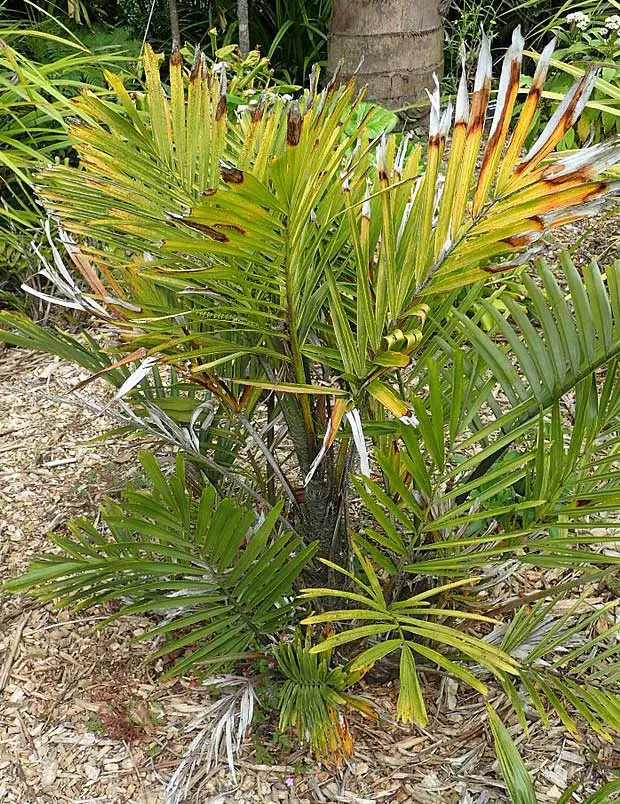
The Dwarf Sugar Palm Tree, scientifically known as Arenga engleri, is a captivating and compact palm species that hails from the southern regions of Japan and Taiwan. This palm typically grows to a mature height of 6 to 10 feet (1.8 to 3 meters) and forms a clump of slender trunks, giving it a graceful and appealing appearance.
Its fronds are pinnate and elegantly arch, showcasing a feathery, deep green foliage. This palm is celebrated for its adaptability, thriving in various soil types and light conditions, making it suitable for both full sun and partial shade.
One of the most intriguing qualities of the Dwarf Sugar Palm is its ability to produce a sweet sap. This sap is collected and used to create traditional sweeteners and beverages, lending the palm its common name.
| Scientific name: | Arenga engleri |
| Common names: | Dwarf Sugar Palm, Formosa Palm, Taiwan Sugar Palm, Taiwan Arenga Palm |
| Origin: | Native to the southern regions of Japan and Taiwan. |
| Growth Rate: | Moderate. Up to 20 ft tall and 10 ft wide. |
| Cold Tolerance: | USDA Zones 10a (30 to 35 F) to 11 (above 40 F). |
| Light Req: | Full sun to partial shade. |
| Water Req: | Moderate |
| Soil Req: | Widely adaptable |
| Fruit: | Yellow to purple. Not edible. |
| Propagation: | Seed, germinating in 2 months when fresh or division. |
Areca Palm Appearance
The Dwarf Sugar Palm is a petite palm tree that typically reaches a maximum height of 20 feet and a diameter of 6 inches, with a potential spread of up to 16 feet. Its stems are adorned with delicate black fibers.
This palm’s most striking feature is its long, graceful, triangular, and fishtail-shaped leaves, which can extend up to 8 feet in length. These dark olive-green leaves often exhibit an elegant twist, imparting a subtle spiraling appearance.
Leaflets emerge from the center of each stem, showcasing a dark green to olive color on their upper side and a silvery hue beneath. The leaflets, measuring 5 to 8 inches in length, possess a distinctive V cross-section and proliferate in a single plane along the stems.
Fruits and Flowers of the Dwarf Sugar Palm

The Dwarf Sugar Palm (Arenga engleri) produces small and inconspicuous flowers, which are typically not the focal point of this palm’s ornamental appeal. These flowers are often cream or yellowish in color and are arranged in clusters.
While they are not particularly showy or fragrant, they serve an essential role in the palm’s reproductive process by attracting pollinators, such as insects.
Regarding fruit, the Dwarf Sugar Palm generates small, globular fruits that typically range in color from red to deep purple when ripe. Each fruit is usually less than 1 inch (2.5 cm) in diameter and can contain one to three seeds.
While these fruits are not typically consumed by humans, they are a valuable food source for various wildlife species in the palm’s native habitat.
How to Care for the Dwarf Sugar Palm
These palms thrive best in spots that receive abundant sunlight, preferably with a partial to full sun exposure, allowing their vibrant foliage to flourish and add beauty to the surroundings.
When it comes to soil, the choice is versatile, but the key is ensuring good drainage. This prevents the roots from becoming waterlogged, which can be detrimental to the palm’s well-being.
In their early years, these palms appreciate consistent moisture to establish strong root systems. However, as they mature, they become more resilient to drought. During dry spells, a dose of water helps maintain their health.
Fertilization is needed in moderation, with a slow-release palm fertilizer applied once or twice a year during the growing season. This provides the essential nutrients they require without overwhelming them.
Pruning requirements are typically minimal, involving the removal of dead or damaged fronds. The goal is to maintain their natural grace without overdoing it.
While these palms are generally resistant to pests, it’s still a good practice to inspect them for common issues like scale and mites. Early detection allows for prompt treatment.
Lastly, if you’re interested in propagating more Dwarf Sugar Palms, remember that they can be grown from seeds. Sow the seeds shortly after harvesting to improve germination success.
Dwarf Sugar Palm Pictures



Thank you! This was so helpful! I was plotting to plant one on a super sunny dry area but now I need to rethink! So grateful for the knowledge you share